Remember those magical family restaurants where the waitress knew your name, the menu never changed, and the desserts seemed impossibly tall? Before chain restaurants dominated every exit ramp and strip mall, these beloved local establishments were the backdrop for countless birthday celebrations, after-church gatherings, and Friday night treats. They may be gone now, replaced by fast-casual concepts or converted into something entirely different, but the memories of these dining institutions continue to flavor our reminiscences of simpler times.
1. Howard Johnson’s
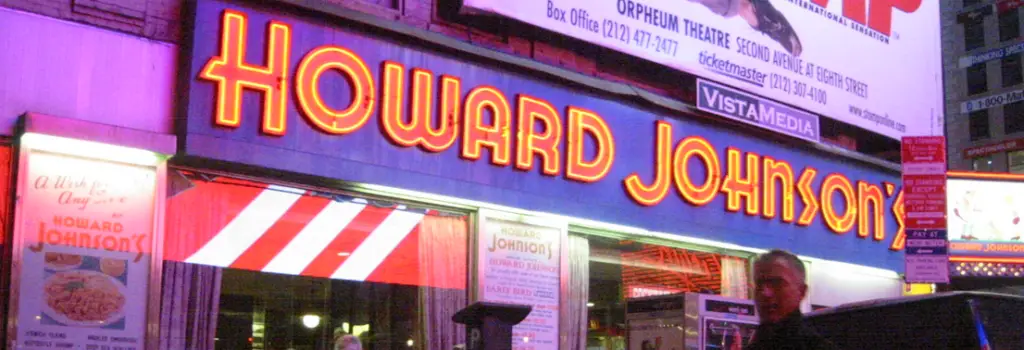
The orange roof and weathervane spire of Howard Johnson’s was once as familiar to American travelers as interstate signs themselves, with over 1,000 locations dotting the country’s highways by the 1970s. The 28 flavors of ice cream were a national treasure, with classics like Burgundy Cherry and Maple Walnut creating devoted followers who would travel miles just for a scoop. Those turquoise booths witnessed countless road trip pit stops, where weary families would revive themselves with the signature fried clam strips and the famous “Frankfort” hot dogs. American Business History also give special shoutout to this restaurant as one of the country’s very first big chains.
The restaurants were practically a mandatory stop on any family vacation, creating a reliable constant as the landscapes changed outside the car windows. The placemats featured games that kept children entertained while parents enjoyed a brief respite and a cup of that dependable HoJo coffee. By 2017, the once-mighty empire had dwindled to just one location in Lake George, NY, before finally closing in 2022, marking the end of an era that spanned nearly a century of American dining history.
2. Bob’s Big Boy
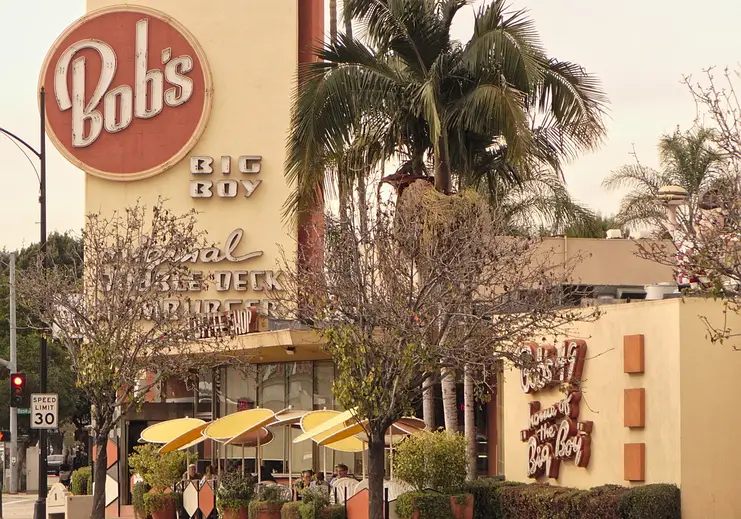
The towering fiberglass statue of a chubby-cheeked boy holding a hamburger aloft served as a beacon for hungry families, instantly recognizable from blocks away and creating excitement for children who knew what awaited inside. The double-decker Big Boy hamburger—with its third slice of bun in the middle and special sauce that adults tried unsuccessfully to replicate at home—created a loyal following that spanned generations. Those red checkered tablecloths and vinyl booths witnessed countless teenage first dates, family celebrations, and Saturday morning breakfasts where the signature hotcakes with warm syrup created a weekend ritual for regular patrons. Discover Los Angeles still celebrates this restaurant as an icon of the city.
Founded in 1936 by Bob Wian in Glendale, California, the restaurant became famous not just for its food but for the car hop service that made it a central fixture in America’s budding car culture of the 1950s. The strawberry pie—piled high with fresh berries in a clear gel that showcased their redness against the flaky crust—became a signature dessert that many families would take home whole to enjoy after Sunday dinner. While the chain has dwindled considerably from its peak of over 800 locations in the 1970s, a handful of restaurants still operate today, preserving the iconic Big Boy mascot and giving grandparents the chance to show grandchildren where they spent Saturday nights after high school football games.
3. Steak and Ale
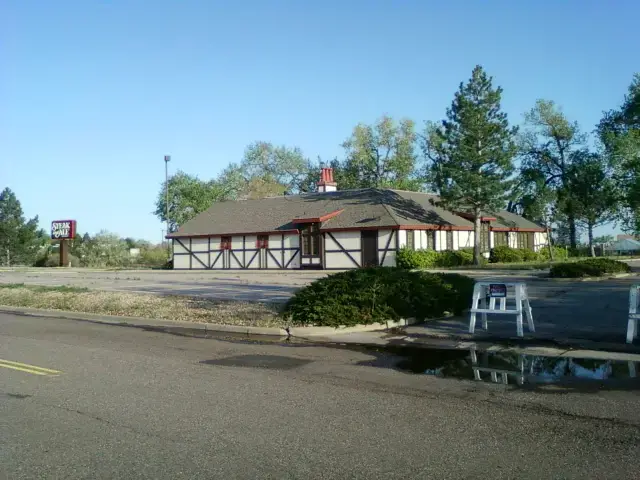
Steak and Ale brought affordable luxury to middle-class America, with its Tudor-style buildings, dark wood paneling, and stained glass windows creating an atmosphere of old-world elegance. The famous herb-roasted prime rib and unlimited salad bar made dinner feel like a special occasion, even when there was nothing particular to celebrate. Those red leather booths hosted countless anniversary dinners, graduation celebrations, and first dates—events made more memorable by the signature pewter tankards that made every beverage feel festive. For those curious about the timeline of this restaurant’s rollercoaster journey, The Takeout answers the question of just what exactly happened to this beloved eatery over the decades.
Founded by Norman Brinker in 1966, the chain revolutionized casual dining with innovations like the salad bar concept and differentiated dining areas, ideas now standard in the industry. The dimly lit interior made everyone look their best and created an intimate atmosphere where family stories could be shared across generations over baskets of that irresistible honey-wheat bread. When the parent company filed for bankruptcy in 2008, closing all locations, it left a void in American dining—a middle ground between casual and fine dining where special moments could be celebrated without breaking the bank.
4. Lum’s
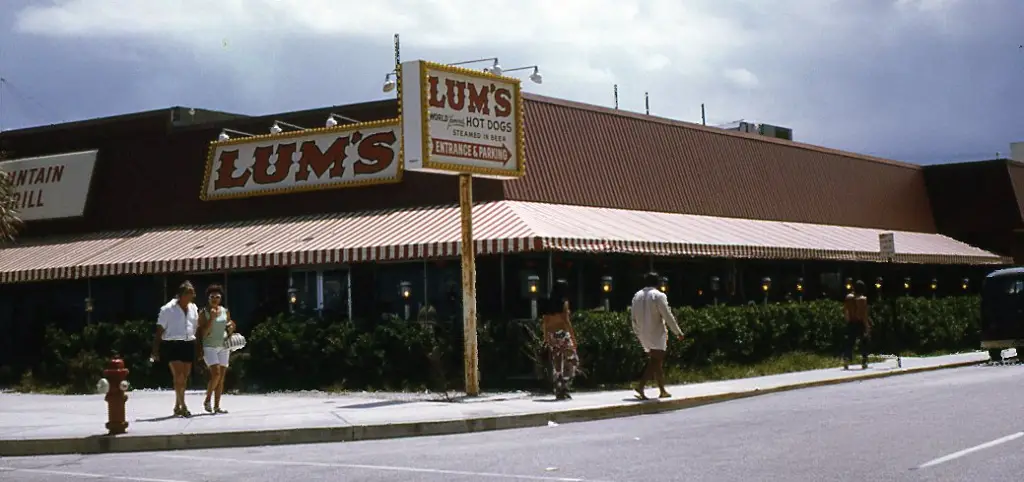
Famous for beer-steamed hot dogs and frosted schooners of beer, Lum’s created a friendly, unpretentious atmosphere where families and working folks alike felt comfortable pulling up a chair. The signature Ollieburgers had a devoted following, with their special seasoning becoming so popular that regulars would beg for the recipe or purchase bottles to take home. The restaurants were deliberately homey, with wooden booths and nautical decor that made every location feel like it had been there forever, even when it was brand new. MeTV further puts into perspective what a turbulent history Lum’s has had.
Founded by Stuart and Clifford Perlman in Miami in 1956, Lum’s expanded to over 400 locations before being sold to KFC, whose management couldn’t maintain the special character that made the restaurants so beloved. The hot dogs—simmered in beer with a hint of brown sugar—created a flavor profile that adults appreciated while kids just knew they tasted better than regular hot dogs. The last Lum’s closed in 2009 in Bellevue, Nebraska, but recipes for those famous hot dogs and Ollieburgers still circulate among devoted fans who refuse to let the flavors of their youth disappear completely.
5. Chi-Chi’s

With its festive atmosphere and complimentary basket of warm chips and salsa, Chi-Chi’s introduced many Americans to Mexican food beyond the basic taco. The sizzling fajita platters would turn heads as servers carried them through the dining room, the sound and aroma creating instant envy at neighboring tables. Birthday celebrations were especially memorable, with the staff assembling to sing their special version of “Happy Birthday” while placing a sombrero on the guest of honor’s head and serving up fried ice cream.
The restaurant’s tagline—”A celebration of food!”—perfectly captured the experience of dining in the colorfully decorated rooms where piñatas hung from ceilings and walls featured stylized Mexican artwork. The chimichanga, fried ice cream, and seafood enchiladas became touchstones of “Mexican” food for a generation of diners in regions where authentic Mexican cuisine was not yet widely available. A hepatitis outbreak linked to green onions and bankruptcy in the early 2000s spelled the end for Chi-Chi’s American locations, though the name lives on in Europe and in grocery products like salsa and tortilla chips.
6. Beefsteak Charlie’s
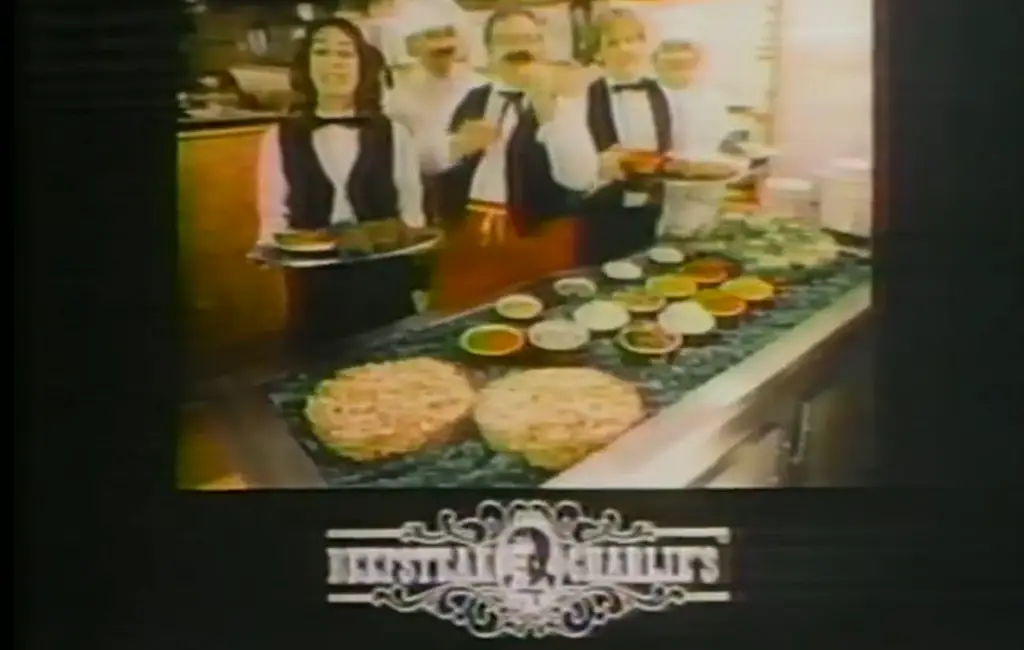
“You’re gonna get spoiled” wasn’t just a slogan—it was a promise fulfilled by unlimited shrimp, beer, wine, and salad bar that made Beefsteak Charlie’s a veritable paradise for value-conscious diners in the 1970s and 80s. The all-you-can-eat salad bar featured not just vegetables but also peel-and-eat shrimp, pasta salad, and fresh bread, creating what seemed like an endless feast for one fixed price. Parents appreciated the value while children delighted in the freedom to return to the salad bar as many times as they wanted, often creating strange food combinations just because they could.
Named after a fictional bon vivant character rather than a real person, the chain had a jovial personality reflected in the staff’s friendly banter and the casual, upbeat atmosphere. The steaks were decent but almost beside the point—it was the unlimited extras that created the restaurant’s legend and inspired a loyalty that kept families returning week after week. By the early 1990s, competition and changing tastes led to the closure of all locations, but mention “Beefsteak Charlie’s” to anyone who grew up in the Northeast during that era, and you’ll likely see their eyes light up with memories of bottomless shrimp and salad plates piled impossibly high.
7. Shakey’s Pizza Parlor

Long before arcade games and animatronic animals dominated children’s dining experiences, Shakey’s created family entertainment with just a piano, banjo, and the infectious spirit of sing-along fun. The pizza was served on raised metal trays, creating more table space for the large families that often gathered there after Little League games or school performances. Those red-and-white checked tablecloths hosted countless children’s birthday parties, where the sound of “Happy Birthday” played on honky-tonk piano mixed with the laughter of excited kids and the conversations of relieved parents who could relax while their children were entertained.
Founded in 1954 by Sherwood “Shakey” Johnson (who earned his nickname from nerve damage suffered during World War II), the restaurants featured glass windows where customers could watch their pizza being made, an early example of “food theater” now common in restaurants. The Mojos—battered and fried potato slices—were so popular that many customers would order them instead of french fries, creating a signature side dish that competitors could never quite duplicate. While Shakey’s has disappeared from many regions of the United States, it maintains a strong presence in California and is thriving internationally, particularly in the Philippines where it continues to create new generations of memories.
8. Valle’s Steak House
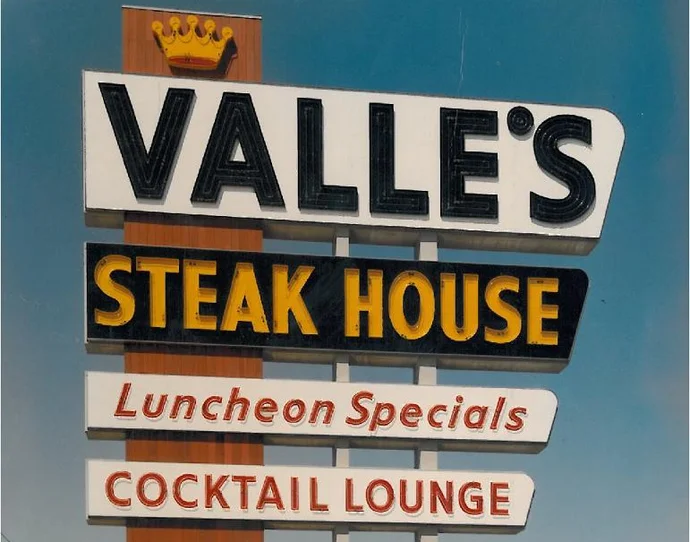
With its massive dining rooms often seating over 500 people, Valle’s created an atmosphere of abundance that perfectly matched its oversized portions and all-you-can-eat accompaniments. The restaurants were known for their “Valle’s Cut” prime rib—a slab of beef so substantial it often hung over the edges of the plate—served with all-you-can-eat salad bar and unlimited loaves of fresh-baked bread. Wedding receptions, prom dinners, and retirement parties filled these cavernous spaces every weekend, the special occasions made more memorable by the restaurant’s signature relish trays and ice cream sundae bar.
Founded by Donald Valle in Portland, Maine, in 1933, the chain expanded throughout the Northeast and became known as the place where middle-class families could experience a touch of luxury without pretension. The enormous parking lots would fill to capacity on Mother’s Day and Easter Sunday, when waiting for a table became part of the experience, with families chatting in the lobby while watching the constant procession of sizzling steaks emerging from the kitchen. The energy crisis of the 1970s hit the chain hard due to their large, inefficient buildings, and changing dining trends through the 1980s led to the closure of all locations by 2000, marking the end of an era of American dining where bigger was always better.
9. Gino’s Hamburgers
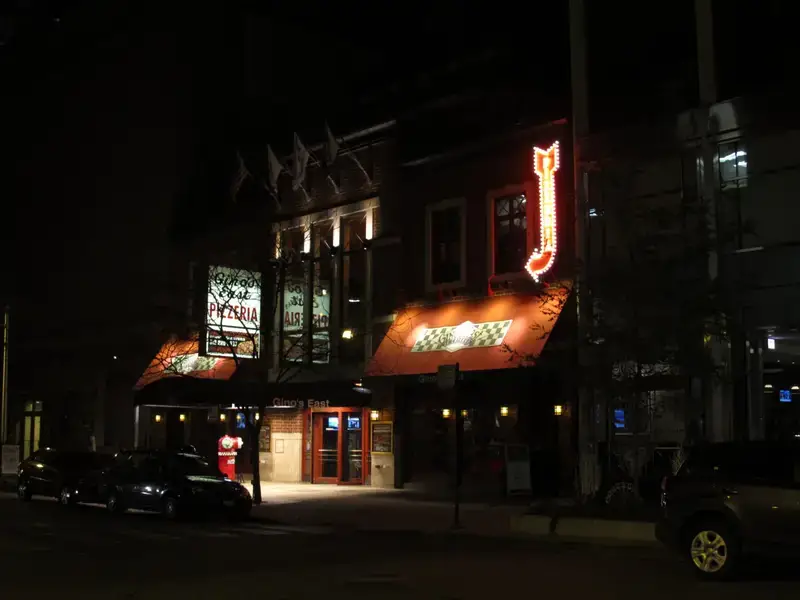
Before Arlo Guthrie sang “You can get anything you want at Alice’s Restaurant,” generations of East Coast families knew they could get everything they wanted at Gino’s—from the Kentucky Fried Chicken franchise they often housed to their famous Gino Giant burger. Football fans felt a special connection to the chain founded by Baltimore Colts defensive end Gino Marchetti, whose football fame added a touch of celebrity to every meal. The restaurants featured a distinctive red and white color scheme with a wedge-shaped roof design that made them easily recognizable from a distance—a beacon for hungry families looking for a reliable meal.
The Gino Giant burger—a two-patty predecessor to the Big Mac with special sauce on a three-part bun—created devoted followers who would accept no substitutes. Children were drawn to the restaurants not just for the food but for the sports memorabilia that decorated the walls and the occasional visits from Colts players that added an element of star-struck excitement to dinner. Marriott Corporation purchased the chain in 1982 and converted most locations to Roy Rogers restaurants, leaving only memories of that distinctive taste until a revival effort launched in 2010 brought back a handful of locations and the chance for grandparents to introduce their grandchildren to the flavors of their youth.
10. Farrell’s Ice Cream Parlour

The mere mention of Farrell’s evokes the sound of ringing bells, blaring sirens, and the hurried footsteps of servers carrying the famous Zoo—an enormous ice cream sundae that required two people to deliver it to your table. Birthday celebrations at Farrell’s were an experience like no other, with staff members beating bass drums and creating such a spectacle that everyone in the restaurant would stop to watch and applaud. The 1890s decor, complete with striped vests and straw boater hats on the servers, created a time-travel experience that made an ordinary dessert feel like an extraordinary adventure.
The candy counter near the entrance ensured that even if you were too full for dessert after your meal, you wouldn’t leave empty-handed. The signature paper birthday certificates and tin signs advertising ice cream flavors became collector’s items for regulars who marked the passage of years by these ritual visits. Although most locations closed by the end of the 1990s, with revival attempts continuing through 2019, the memory of that first glimpse of the Zoo—a mountain of ice cream adorned with multiple toppings and surrounded by sparklers—remains a perfect crystallization of childhood joy for countless Americans who were lucky enough to experience it.
11. Ponderosa/Bonanza Steakhouse
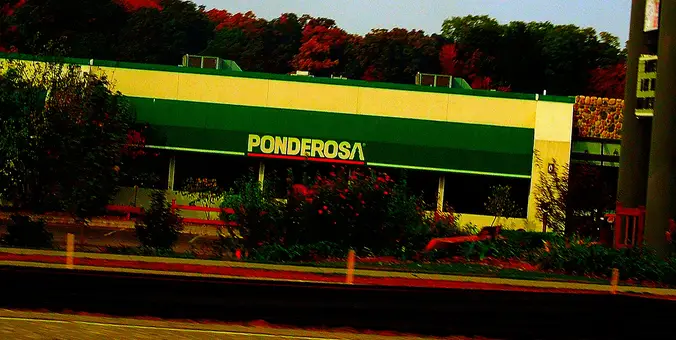
The distinctive wooden exterior and wagon wheel decorations of Ponderosa and Bonanza steakhouses transported diners to a simulated Wild West experience that captivated families looking for an affordable steak dinner. The self-service salad bar—revolutionary when introduced—allowed children to exercise independence by selecting their own vegetables (or, more likely, loading up on pudding and cottage cheese). Parents appreciated the budget-friendly “family night” specials where kids could eat for just 99 cents, making what felt like luxury dining accessible for middle-class families during the economic challenges of the 1970s and 80s.
The restaurants were named after the fictional ranch in the television series “Bonanza,” capitalizing on America’s western fascination and creating an instant connection with TV-watching families. The open-flame grilling of steaks created a mouthwatering aroma that filled the dining room and made the anticipation of dinner part of the experience itself. While a small number of locations still operate under the Ponderosa and Bonanza names, the chain’s footprint has drastically diminished from its peak of over 600 restaurants, leaving behind memories of plastic steak markers, all-you-can-eat sundae bars, and those distinctive brown plastic trays that you’d carry through the cafeteria-style line.
12. Victoria Station

Built from authentic retired railroad cars and shipping containers, Victoria Station created a unique dining environment where each booth felt like a private compartment on a luxury train. The prime rib was carved tableside from silver serving carts, creating a theatrical dining experience that made ordinary weeknight dinners feel like special occasions. The dimly lit interior, rich with polished wood and brass details, created a sophisticated atmosphere that made teenagers feel grown-up and parents feel like they were getting an upscale experience without the white-tablecloth prices.
At its peak in the late 1970s, the chain had 100 locations decorated with authentic British railway memorabilia, including station signs, red telephone booths, and conductors’ lanterns that created an immersive theme restaurant before the concept became commonplace. The signature drink—the Conductor’s Punch—came in a collectible conductor’s lantern mug that many families still have tucked away in kitchen cabinets, artifacts from countless celebration dinners. Financial troubles led to the chain’s decline in the mid-1980s, leaving only memories of those unique dining cars where families would gather for graduation celebrations and special announcements, the railroad theme providing an apt metaphor for life’s journeys and milestones.
Like beloved old photographs, these restaurants may have faded, but the moments they helped create remain vibrant in our collective memory. Each sticky menu, each signature dish, each familiar booth where your family always sat—they were more than just places to eat; they were settings for life’s small but significant moments. Today’s children will have their own restaurant memories, of course, but there was something special about these independent and early chain establishments, something genuine that can’t quite be replicated in today’s more homogeneous dining landscape. They served up more than just food; they dished out a sense of place, tradition, and belonging that, for many of us, still tastes like home.


